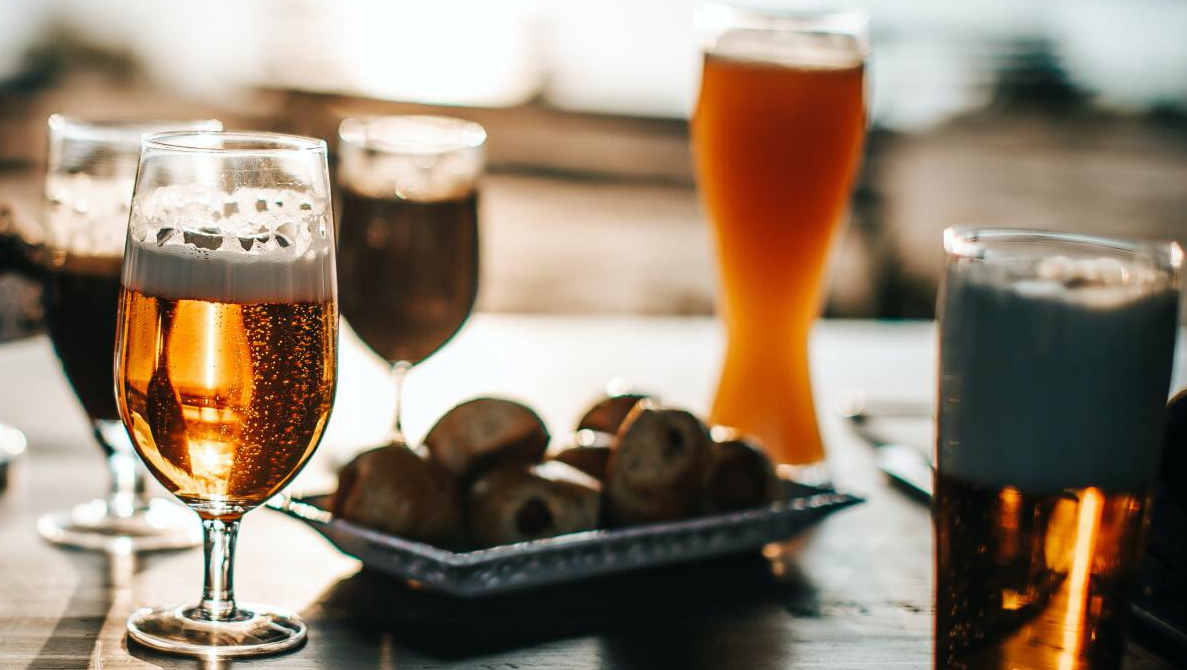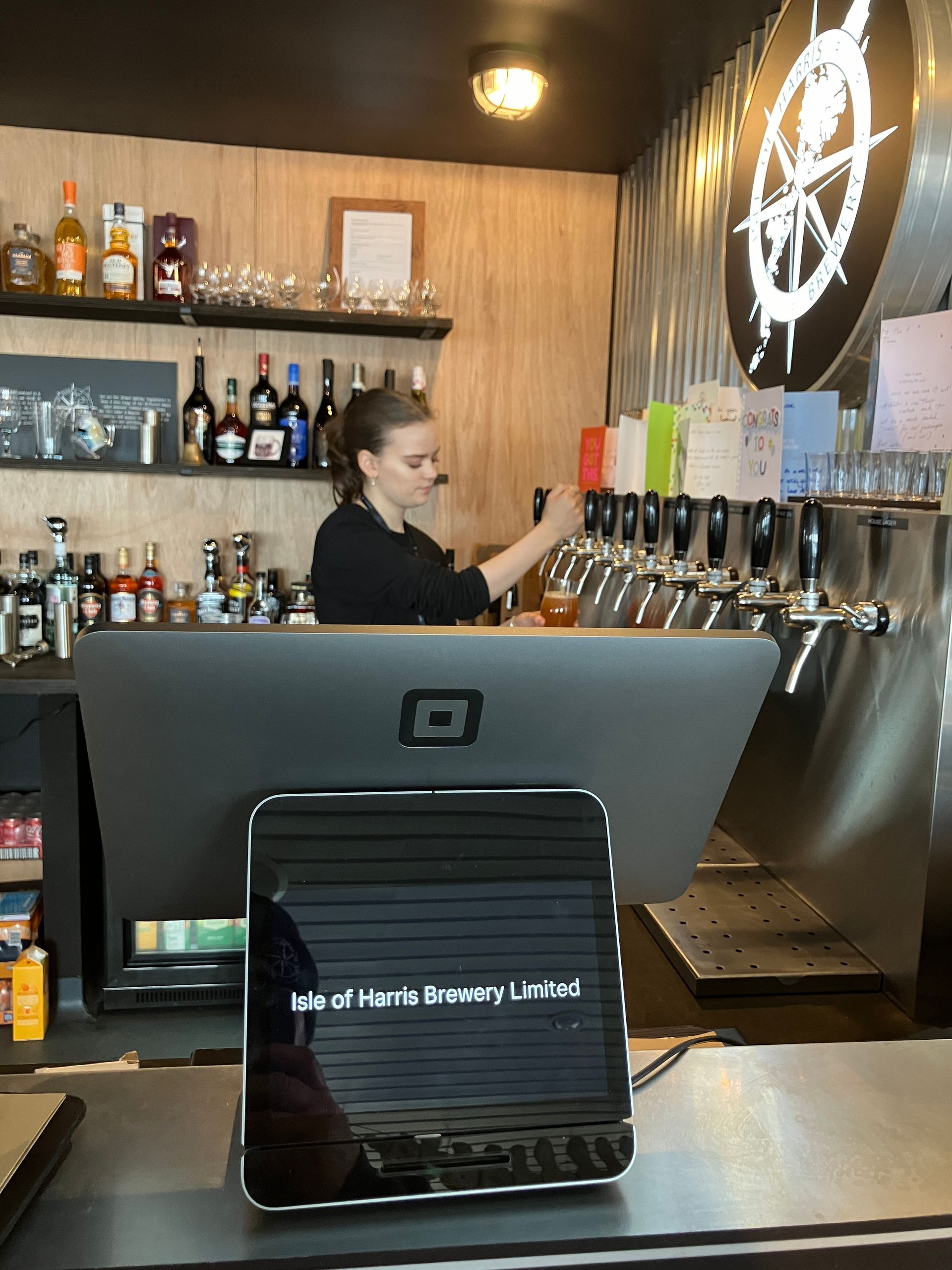18. How to drink beer!

Our guide to enjoying the perfect craft ale.
This blog sounds like teaching your Grandma to suck eggs or maybe that should be “sup kegs” (…sorry!) but this is a blog I have wanted to write for a while. From the way you store and chill your beer to how you pour it and the glass you use - these tips will really help you get the most from your beer. So stick with us for ...
The Isle of Harris Brewery five step “Guide to Drinking Beer”
On our first visit to Belgium we were struck by the very serious business of enjoying a beer in a bar. Many bars in Belgium offered table service long before it became the new post COVID norm. In Belgium, beer waiters or Cicerone are respected in the same way a Sommelier would be in a fancy restaurant. They also demand a far higher salary than bar staff in this country. In Belgium the average beer waiter’s annual salary before bonuses is the equivalent of £9,000 or 50% more than his/her British counterpart.
Now we love nothing more than a pint in a British pub but the Belgian experience takes beer drinking to a whole new level. Most bars invite you to take a seat and a waiter hands you a beer menu and helps you make your choice from the impressive variety of beers and beer styles on offer. Every beer has a different glass which enhances it’s serve and the beer is poured at your table and like a silver service restaurant the glass and bottle are presented to you with label facing. I remember feeling daunted by the number of beers and the sheer ceremony of the experience when we first visited Brussels. I’m sure most of Delirium Cafe’s customers with its beer menu of over 2,000 different beers feel slightly overwhelmed, but here is our take on what the Belgian’s could teach us about how to store, pour and taste beer.
Step One: Storing beer
We describe many of our beers as being “Best enjoyed fresh from the Brewshed” and this is largely because many of our beers are under 7% ABV and “hoppy”. To enjoy the fresh hop and malt flavours and aromas we would recommend drinking our beers within one year of the brew date. The exception to this is darker malted beers with a higher alcohol content like Stouts, Doppelbocks and Porters. We tested this theory this Christmas by ageing one batch of our Christmas 2020 Spiced Stout, storing bottles upright, in an unheated dark room for a year. We were really pleased with this experiment and if you were lucky enough to get hold of a bottle we hope you liked it too.

But wait….this doesn’t mean to say that when you receive your beers from us you should open the box and dive straight in! Our beers are best chilled to around 8˚c for hoppy beers, 10˚c for British and Belgian styles and 12˚c for stouts and porters. This simple step is probably the best thing you can do to improve the taste of your beer and warm beers can be …lets say…lively! The next important point is that beer should be stored upright. This is to avoid oxidation, and as our beer are unfiltered, this also allows any sediment to settle in the bottom of the bottle.
Step Two: Choosing your first beer
If you are lucky enough to have several styles of beer chilled and ready to drink its worth noting that there is an ideal order to drink the different styles of beer. Generally speaking beers at a formal tasting would be ordered from lightest and lowest ABV to darkest and highest ABV. In our core range this would mean starting with N˚6 SMASH and working towards the IPAs (N˚1, N˚5 and N˚ 8) and finally N˚3 the Chocolate Stout. So by this point you’re probably getting quite thirsty we’re about to perfectly pour our first beer but first we should choose our glass.
Step Three: Choosing a glass
First things first we would never, ever, ever suggest drinking craft ale straight from the bottle of the can. This is a terrible idea as beers are designed to be poured to release carbon dioxide bubbles into the head or foam. If you gulp this down you'll be issuing more pardons than President Trump. If you really start to enjoy craft ales your will discover there are lots of different styles of beer glass which are designed to make the most of the beers character. Many craft beer glasses like ours are stemmed tulip style glasses. These glasses are designed to keep beer cool (because they are held by the stem) and retain aroma due to being a smaller diameter at the rim yet allowing space for a generous head. Another popular stemmed glass is chalice style which have a wider diameter at the rim. These support head and release aromas easily, great for big sips of Dubbels and Trappist beers. A more recent addition to our own glass collection (we have far too many!) is the TEKU beer glass. This is more like a wine glass shape with a wide bottom, narrowing towards the top and widening again at the rim (a bit like the shape of a thistle flower). This is a very versatile glass and suits many different styles of beer. For the very best tasting glass we recommend the AnDer glass which is a stouter version of the TEKU glass with a shorter stem. It also has ridges in the bottom of the glass that encourage a good head. This helps in experiencing smell, foam and flavour. Flutes are straight narrow glasses which suit Helles and Pilsner style beers and a Weizen glass is tall and narrow at the base and suits wheat beers. A Stein is the largest and thickest of the glasses with a straight body and a chunky handle. They are great for German lagers, Belgian white beers and Oktoberfest beers and won’t break with the most enthusiastic “Prost!”
NOTE: We have included this section because, as beer geeks, we think its interesting but if you don't have the correct glass all is not lost, lets face it you could drink beer from any glass, just please, please don't drink it from the bottle!
Step Four: Now for the pour…we’re almost there!!
Start with a cold wet glass. The best way to do this is to rinse the glass in cold running water. Start the pour with the glass and the bottle held at 45˚ and slowly raise the rim of the glass until is vertical and tilt the bottle until it is almost horizontal. For bottle conditioned beer like ours you should pour slowly and stop when the last centimetre of beer is still in the bottle (this is the reason why bottles have shoulders and necks to stop sediment from being poured into the glass) The ideal height of the head is one inch.

Step Five: The best bit…tasting
We’re now, at last, ready to enjoy our first beer. You can swirl and sniff, scrutinise the colour, opacity, head and carbonation you can sip and coat the tongue, breathe in, breathe out and shake it all about but here is the plot twist. Beer judges may have a Cicerone endorsed way of tasting beer but for the average drinker there is no right or wrong way to drink beer and if you are tasting beers with a group of friends you may all smell, taste and see different things in the same beer. Despite beer's humble origins as a workers drink, in recent years a culture of beer snobbery has started to emerge. Where once everyone drank beer, with "beer connoisseurs" waxing lyrical about nose and mouthfeel there is a risk that the craft beer world could become elitist but we think there is a style of beer out there for everyone and if you like a beer…its a good beer. Even if you don't know your Saaz from your elbow you can get the most from craft beer by following these tips, so give it a try and let us know how you get on.









